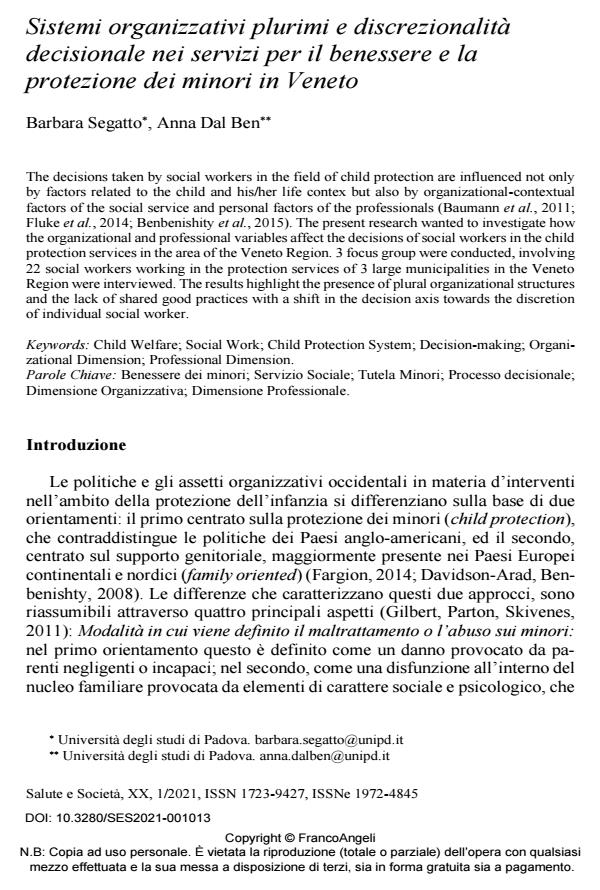Sistemi organizzativi plurimi e discrezionalità decisionale nei servizi per il benessere e la protezione dei minori in Veneto
Titolo Rivista SALUTE E SOCIETÀ
Autori/Curatori Barbara Segatto, Anna Dal Ben
Anno di pubblicazione 2021 Fascicolo 2021/1
Lingua Italiano Numero pagine 16 P. 180-195 Dimensione file 454 KB
DOI 10.3280/SES2021-001013
Il DOI è il codice a barre della proprietà intellettuale: per saperne di più
clicca qui
Qui sotto puoi vedere in anteprima la prima pagina di questo articolo.
Se questo articolo ti interessa, lo puoi acquistare (e scaricare in formato pdf) seguendo le facili indicazioni per acquistare il download credit. Acquista Download Credits per scaricare questo Articolo in formato PDF

FrancoAngeli è membro della Publishers International Linking Association, Inc (PILA)associazione indipendente e non profit per facilitare (attraverso i servizi tecnologici implementati da CrossRef.org) l’accesso degli studiosi ai contenuti digitali nelle pubblicazioni professionali e scientifiche
The decisions taken by social workers in the field of child protection are influenced not only by factors related to the child and his/her life contex but also by organizational-contextual fac-tors of the social service and personal factors of the professionals (Baumann et al., 2011; Fluke et al., 2014; Benbenishity et al., 2015). The present research wanted to investigate how the organizational and professional variables affect the decisions of social workers in the child protection services in the area of the Veneto Region. 3 focus group were conducted, involving 22 social workers working in the protection services of 3 large municipalities in the Veneto Region were interviewed. The results highlight the presence of plural organizational structures and the lack of shared good practices with a shift in the decision axis towards the discretion of individual social worker.
Parole chiave:Benessere dei minori; Servizio Sociale; Tutela Minori; Processo decisionale; Dimensione Organizzativa; Dimensione Professionale.
Barbara Segatto, Anna Dal Ben, Sistemi organizzativi plurimi e discrezionalità decisionale nei servizi per il benessere e la protezione dei minori in Veneto in "SALUTE E SOCIETÀ" 1/2021, pp 180-195, DOI: 10.3280/SES2021-001013